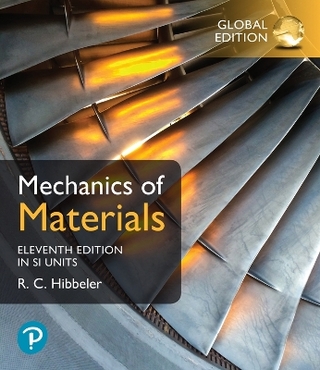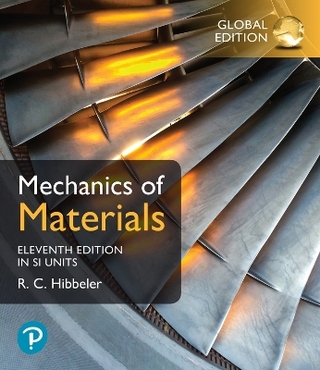
Fundamental Principles of Optical Lithography – The Science of Microfabrication
Wiley-Blackwell (Hersteller)
978-0-470-72387-6 (ISBN)
- Keine Verlagsinformationen verfügbar
- Artikel merken
The fabrication of an integrated circuit requires a variety of physical and chemical processes to be performed on a semiconductor substrate. In general, these processes fall into three categories: film deposition, patterning, and semiconductor doping. Films of both conductors and insulators are used to connect and isolate transistors and their components. By creating structures of these various components millions of transistors can be built and wired together to form the complex circuitry of modern microelectronic devices. Fundamental to all of these processes is lithography, ie, the formation of three-dimensional relief images on the substrate for subsequent transfer of the pattern to the substrate. This book presents a complete theoretical and practical treatment of the topic of lithography for both students and researchers. It comprises ten detailed chapters plus three appendices with problems provided at the end of each chapter. Additional Information: Visiting http://www.lithoguru.com/textbook/index.html enhances the reader's understanding as the website supplies information on how you can download a free laboratory manual, Optical Lithography Modelling with MATLAB(r), to accompany the textbook.
You can also contact the author and find help for instructors.
Dr. Chris A. Mack developed the lithography simulation software PROLITH, and founded and ran the company FINLE Technologies fro ten years. He then served as Vice President of Lithography Technology for KLA-Tencor for five years, until 2005. In 2003 he received the SEMI Award for North America for his efforts in lithography simulation and education. He is also an adjunct faculty member at the University of Texas at Austin. Currently, he writes, teaches, and consults on the field of semiconductor microlithography in Austin, Texas.
Preface. 1. Introduction to Semiconductor Lithography. 1.1 Basics of IC Fabrication. 1.2 Moore's Law and the Semiconductor Industry. 1.3 Lithography Processing. Problems. 2. Aerial Image Formation - The Basics. 2.1 Mathematical Description of Light. 2.2 Basic Imaging Theory. 2.3 Partial Coherence. 2.4 Some Imaging Examples. Problems. 3. Aerial Image Formation - The Details. 3.1 Aberrations. 3.2 Pupil Filters and Lens Apodization. 3.3 Flare. 3.4 Defocus. 3.5 Imaging with Scanners Versus Steppers. 3.6 Vector Nature of Light. 3.7 Immersion Lithography. 3.8 Image Quality. Problems. 4. Imaging in Resist: Standing Waves and Swing Curves. 4.1 Standing Waves. 4.2 Swing Curves. 4.3 Bottom Antirefl ection Coatings. 4.4 Top Antirefl ection Coatings. 4.5 Contrast Enhancement Layer. 4.6 Impact of the Phase of the Substrate Refl ectance. 4.7 Imaging in Resist. 4.8 Defi ning Intensity. Problems. 5. Conventional Resists: Exposure and Bake Chemistry. 5.1 Exposure. 5.2 Post-Apply Bake. 5.3 Post-exposure Bake Diffusion. 5.4 Detailed Bake Temperature Behavior. 5.5 Measuring the ABC Parameters. Problems. 6. Chemically Amplifi ed Resists: Exposure and Bake Chemistry. 6.1 Exposure Reaction. 6.2 Chemical Amplifi cation. 6.3 Measuring Chemically Amplifi ed Resist Parameters. 6.4 Stochastic Modeling of Resist Chemistry. Problems. 7. Photoresist Development. 7.1 Kinetics of Development. 7.2 The Development Contrast. 7.3 The Development Path. 7.4 Measuring Development Rates. Problems. 8. Lithographic Control in Semiconductor Manufacturing. 8.1 Defi ning Lithographic Quality. 8.2 Critical Dimension Control. 8.3 How to Characterize Critical Dimension Variations. 8.4 Overlay Control. 8.5 The Process Window. 8.6 H-V Bias. 8.7 Mask Error Enhancement Factor (MEEF). 8.8 Line-End Shortening. 8.9 Critical Shape and Edge Placement Errors. 8.10 Pattern Collapse. Problems. 9. Gradient-Based Lithographic Optimization: Using the Normalized Image Log-Slope. 9.1 Lithography as Information Transfer. 9.2 Aerial Image. 9.3 Image in Resist. 9.4 Exposure. 9.5 Post-exposure Bake. 9.6 Develop. 9.7 Resist Profi le Formation. 9.8 Line Edge Roughness. 9.9 Summary. Problems. 10. Resolution Enhancement Technologies. 10.1 Resolution. 10.2 Optical Proximity Correction (OPC). 10.3 Off-Axis Illumination (OAI). 10.4 Phase-Shifting Masks (PSM). 10.5 Natural Resolutions. Problems. Appendix A. Glossary of Microlithographic Terms. Appendix B. Curl, Divergence, Gradient, Laplacian. Appendix C. The Dirac Delta Function. Index.
| Erscheint lt. Verlag | 16.11.2007 |
|---|---|
| Verlagsort | Hoboken |
| Sprache | englisch |
| Maße | 175 x 250 mm |
| Gewicht | 1178 g |
| Themenwelt | Technik ► Maschinenbau |
| ISBN-10 | 0-470-72387-4 / 0470723874 |
| ISBN-13 | 978-0-470-72387-6 / 9780470723876 |
| Zustand | Neuware |
| Informationen gemäß Produktsicherheitsverordnung (GPSR) | |
| Haben Sie eine Frage zum Produkt? |
aus dem Bereich


